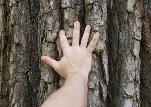Notes to Workshop

1) Forward Salute also includes Padma mudra before Purna.
2) Visual Pace, visual pacing involves coordination of word, movement, including a pause of the movement for emphasis, and the bringing of the consciousness to the part of the body that is being displayed. The consciousness of visual display has three components, 1) Dampening, used to not be seen. One can dampen other parts of the body to emphasize the area to display. 2) Projection, here the energy is projecting an image of self, a quality, for instance when one is showing strength. (Ranjabati Sircar's power is reserve, achieved with joint compression). Energetically this is felt in the same way that one has authority, joy, calmness in the voice. 3) Display as beauty, used to attract mates or to communicate a delight of the body consciousness, or scoptic pleasure, Ananda, Prema.
Visual Pace is noticeable in two modes, negative and positive. One can feel when one is being watched, and this routinely can be a self conscious feeling, when one makes a mistake in the flow. Visual Pace requires we be able to catch the feeling of the body consciousness at the moment of self consciousness. Also when we try to hide something, for instance when we are weak and shaky in a pose and hoping no one sees. The separation of the insecurity and the display is required. In positive mode receiving and projecting can be practiced with a mirror. Our having the idea of being watched, or observing some part of the body admiringly. If we do this with our hand for instance, we don't focus on the feeling of the gaze from the eyes, but on how the energy of the hand responds. This is similar to expansion and contraction of the aura in order to harmonize the energy field to the space, to lower defenses, making people feel comfortable, etc. Or expanding to remove a vibration in the space by creating an overall mood, establish the Flow. For most visual pace can be established in the face first and spread to other areas. Women often have a developed visual pace, but it can be caught up in issues and identity. Hence the usefulness of the skill also is a kriya. Dancers should have this by training. It is a useful tool for teaching.
I saw a play performed. During a break one of the stage hands came out to move the prop, even in the darkness with their black clothes you could feel them for the tremendous presence they were radiating. (talent) They should have also dampened. I also saw a huge group of people on stage to demonstrate an Indian folk dance. One women caught my attention, you could see her face out of forty or more people. I could tell she had classical training, sure enough she turned out to be an accomplished Bharatanatym artist. (training!)
3) Aurobindo's Sharira Chatushaya, the application of Utthapana, stage 1 and 2, noticing the energy and flow of prana in relation to the lightness and lack of exhaustion or tiredness during the flow. The application of Saundarya, being beautiful, bright, sweet and beautiful. This has a subtle component in the lower centers as sexual attraction, the subtle appearance of display, the idea of make up comes from trying to reproduce the state of subtle beauty that is seen when the sexual energies, arousal is strong...but beauty comes from the heart expressing through the energy of the body's consciousness and the recognition of a highly developed pranic flow, open channels.
4) Measure the physical consciousness by comparison to become more aware of it within. Kashi was very physically consciousness, much more than many of the other teachers. But I could sense in her that this was partly the result of long hours of training the body. It was a higher energy that comes from harmonizing the heart with the body through the bhakti, ananda in the body. Training coupled with spiritual development/accomplishment. The role as teacher helps to keep it established, (the dream of the dog). Different also from some of the people who are really dense in the body as a protection from outside forces. Some cops/veterans I have met and some in the medical profession.
Kaliji doesn't seem to be physically consciousness in the same way, her body doesn't seem to have a central location, but rather each part seems self conscious, aware of the divine and responds in harmony. For instance her foot/toe mudras seem completely undirected by Kaliji. Like many hands of the deity reflected a many faceted consciousness being able to work on many things at once each with their own head, their own personality, knowledge, etc. Her feet express the divine on their own giving.
5) Strong Vyapti between Kashi and Kaliji. Jai Guru Devi.
6) Look for the reverse roll from head down the spine.
7) Be more conscious of the tuck.
8) Alternative mudras for trinity breath.
9) Pyramid Lift includes a sway. Careful with cue of local action, try to relate when teaching to other accomplished movements when something seems out of place.
10) 9 joints of movement in connecting the limbs to the action of the spine.
11) Order of Arrival, versus Path of Motion (internal, awareness and sensitivity)
12) ... the suggestion as prevention, rather than descriptive.
13) The roll exists even when full extension or natural alignment isn't possible due to flexibility. (me)


0 Comments:
Post a Comment
<< Home